
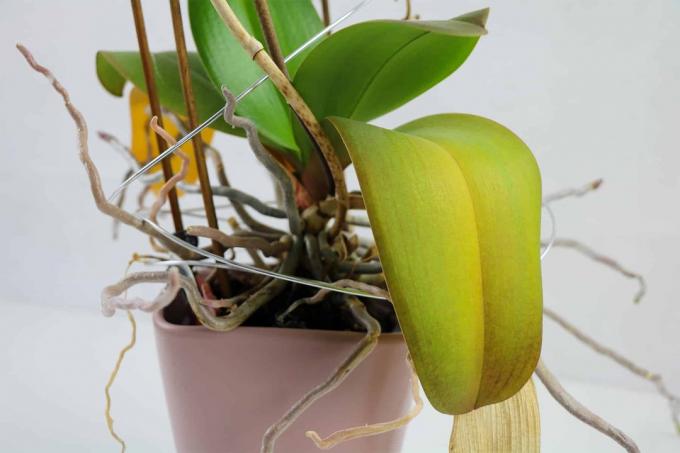
Table of contents
- Hanging leaves - causes
- Not enough water
- Too much water
- Other possible causes
- Weakened by repotting/transplanting
- Location too dark
- Too low temperatures
- Too small planter
- frequently asked Questions
If plants let their leaves hang despite water, this can have various causes. In order to prevent it from dying off by taking rapid countermeasures, you should find out about the possible causes and effective countermeasures here.
Hanging leaves - causes
Most often, hanging plant leaves are due to two causes that can be easily remedied with quick action:
Not enough water
Especially in water-loving plants, drought initially leads to a loss of stability of the leaves and leaf stalks, causing them to hang further down. To be absolutely sure that drought is the cause of drooping leaves, the soil surface can be checked with a thumb test. To do this, the thumb is pressed into the earth's surface. If it is difficult or impossible to press in more than two centimetres, the plant lacks moisture. Quick help is needed here, which looks like this:
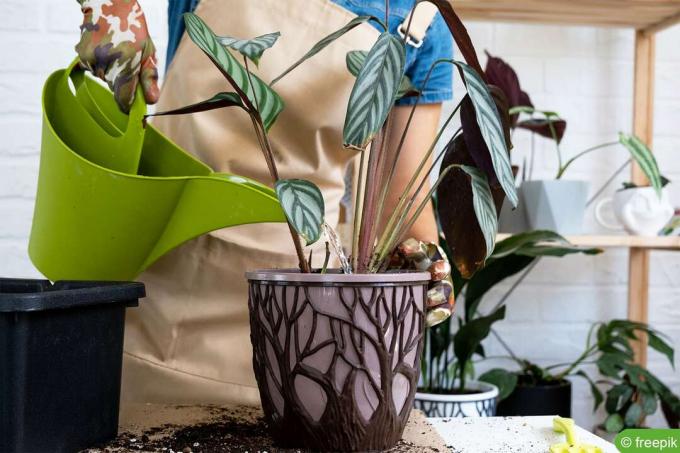
- Unpot potted plants
- Soak the roots in buckets of water
- Let the root soak until no more air bubbles rise
- drain and repot
- For bedding plants, remove the surface of the soil as deeply as possible and fill the planting hole generously with water
- Alternatively, create a "water dam" around the affected plant with soil and water until the water no longer sags
Too much water
If leaves turn yellow in addition to drooping, this is mainly due to too much water. Too much water and waterlogging block the water absorption capacity of the roots. As a result, the leaves receive too little moisture and tilt downwards.
Excessive soil moisture can be recognized when the surface of the soil gives way to light finger pressure, is muddy and a musty smell may rise. Mold infestation is not uncommon in advanced stages. To do this, proceed as follows:
- Unpot potted plants
- Remove moist soil from the roots as much as possible
- Clean and dry the plant container
- Allow the plant to air dry for a few hours (never let it dry over heaters or in direct sunlight)
- afterward Pot the plant in fresh, dry substrate
- Reduce casting quantities in future or adjust to demand
- remove as much wet soil as possible from bedding plants
- Open planting hole for a few hours and let air dry
- Cover the root area with dry soil and do not water for a few days
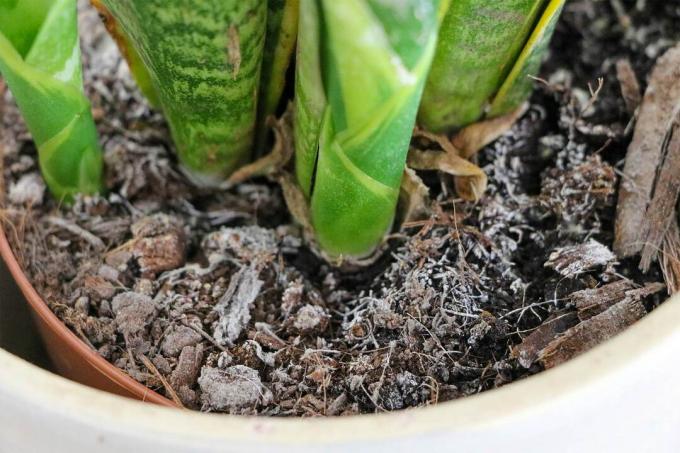
A notice:
When water collects on the earth's surface, this is often a sign of compacted earth. Then water does not reach the root tips and the cause of hanging leaves is, secondarily, a lack of water, which must be counteracted as described under "Insufficient water".
Other possible causes
In addition to too much and too little water, other causes of hanging leaves on plants can also be responsible:
Weakened by repotting/transplanting
Plants are subjected to severe stress when they are repotted or transplanted. The plants need some time to set their roots in fresh soil and get used to new conditions. This results in a plant weakness that can result in drooping leaves. Affected plants usually recover on their own within a short time.
Location too dark
Plants that rely on photosynthesis for energy allow at one dark location the leaves hang quickly. If there is a lack of light, photosynthesis works only to a limited extent or not at all. As a result, there is a lack of energy that plants need, among other things, for their stability. The leaves sag accordingly.
In this case, you should find out about the light requirements of the affected plant and change the location according to the respective plant needs. The plants usually recover within a few hours.

Tip:
A supportive can plant strengthener be administered, such as by pouring field horsetail decoction.
Too low temperatures
Mainly indoor and cold-sensitive garden plants often react to low temperatures with drooping leaves. It has to do with the energy. If the environment is too cold, many plants switch to "survival mode" and slow down their metabolism, which saves energy. This is particularly noticeable on the leaves, which begin to droop. If the temperature rises back into the "comfortable range", the energy supply increases automatically and the leaves straighten up again.
If this is the cause of drooping leaves, the preferred ambient temperature should be found out and the plant should be placed warmer.
Too small planter
If the roots cannot expand sufficiently well in a planter that is too small, plants begin to weaken because growth and supply disorders occur. A remedy creates Repot into a larger vessel.
frequently asked Questions
That depends on the cause and overall health. While plants can quickly recover on their own after repotting/transplanting and relocation Drought, too much moisture and too low temperatures in sick or weakened plants within a week lead to death. If the plants were previously strong and healthy, it usually takes a little longer to enter. Ideally, you act immediately so that it doesn't get that far.
No. This usually only affects plants with longer/larger leaves growing on green, non-lignified stems. Leaves on cacti or fruit trees, for example, do not hang, but mostly react with an unusually large drop of leaves.
 Maike
Maike
Learn more about caring for plants
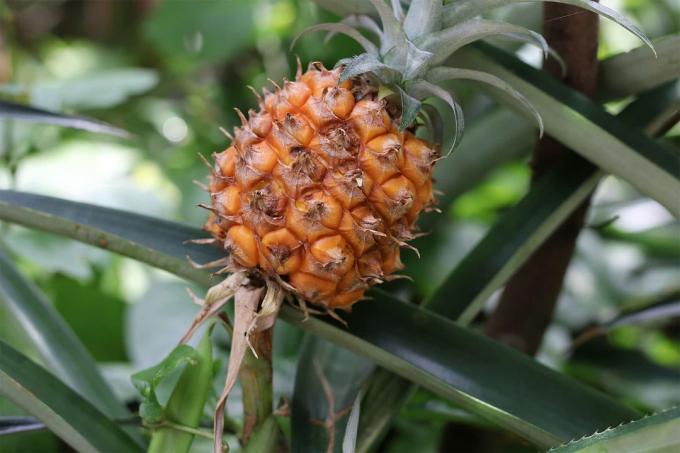
Plants hang their heads: what to do?
If the ornamental plants are cultivated in the garden or in pots and suddenly let their heads droop, then the question quickly arises as to why this can be. However, this is usually due to maintenance errors that need to be checked. If a remedy is found, most plants usually recover quickly.

Repot orchids: how & when to replant
Thanks to more uncomplicated and easy-care new breeds, orchids are now at home on many windowsills. In particular, the Phalaenopsis or butterfly orchid, which is available in countless varieties, is very popular. Read how and when you can best repot the distinctive beauties.

pull tree out of core | 7 tips for growing a tree yourself
Trees can be grown from cores without much effort. There are a variety of plants that have seeds and can be easily cultivated in your own garden. Special classic fruit trees should be mentioned, which are suitable for such a project.
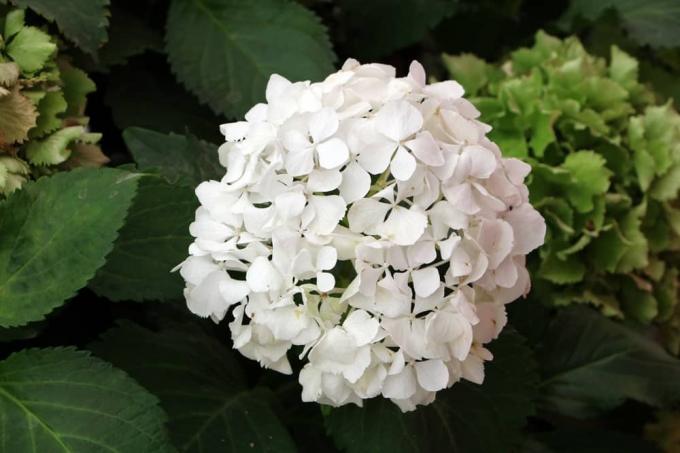
How do hydrangeas stay white? | That way it won't turn pink
How do hydrangeas stay white - this is the question many hobby gardeners ask themselves when the hydrangea changes color. The white often turns into a pink, which is usually comparatively pale or can appear "dirty". Here we reveal how it works.
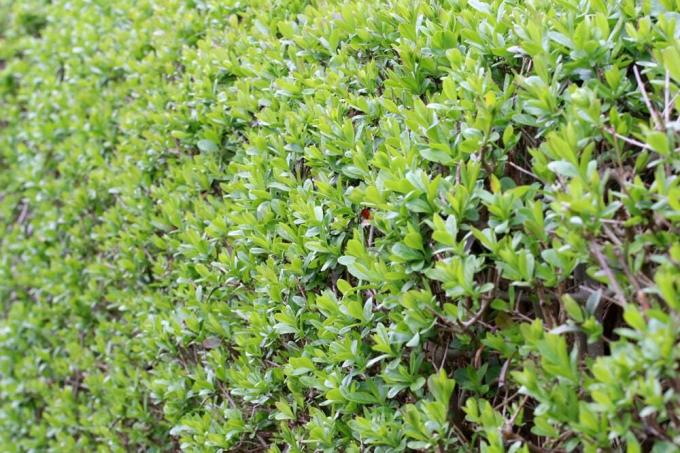
Cutting privet: when is the best time?
Privet is becoming increasingly popular and is often used as a privacy screen in the form of a privet hedge. This is not surprising, because the plant is easy to care for and fast-growing. However, it is crucial to cut the plant regularly at the right time.
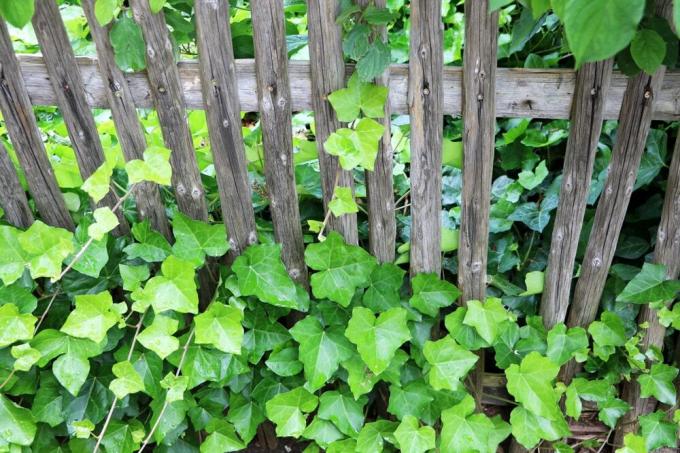
planting ivy | 13 tips on soil, setting & planting
Whether as a privacy screen, climbing wall or terrain greening or ground cover - ivy always works. With species-appropriate care, this evergreen classic will delight gardeners for years with its numerous advantages. In order for the plant to thrive particularly well, the gardener should take these tips into account.



